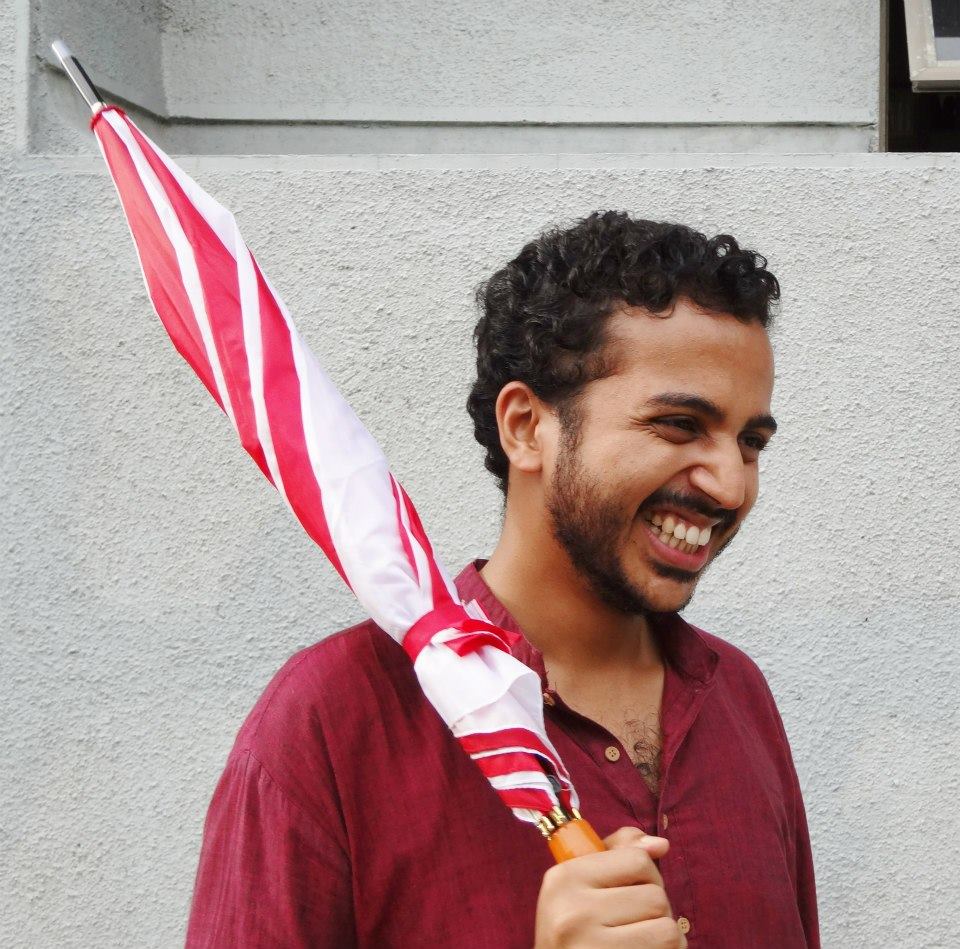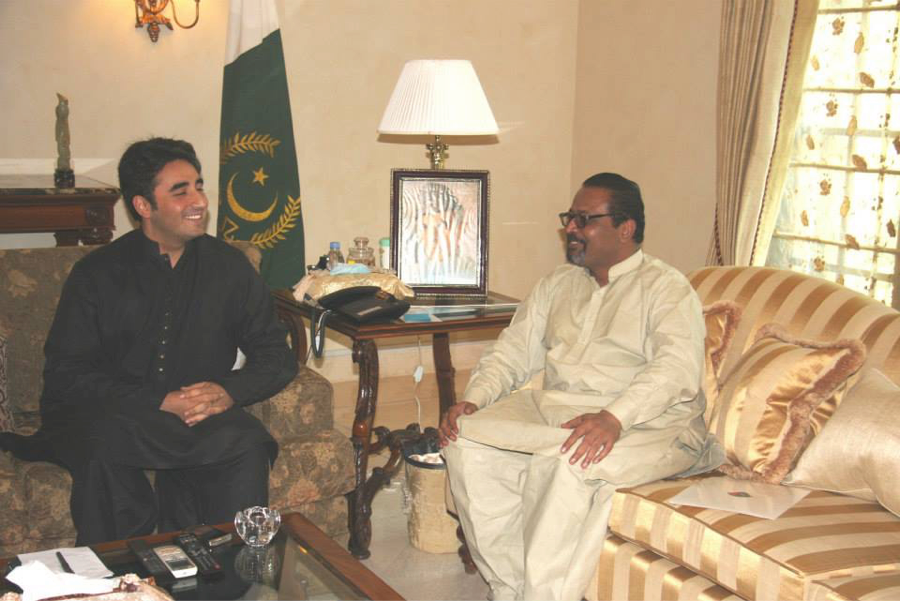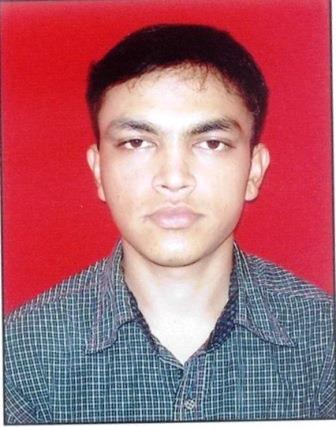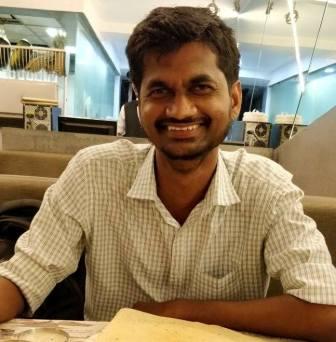Nidhin Donald
 E.A.H Blunt in his book The Caste System of Northern India spends an entire chapter on how castes governed themselves in everyday lives. Based on the U.P. Census Report of 1911, he describes the functions and forms of punishments instituted by jaati panchayats. Blunt points out that feeding the brahmin or paying him a fine or gifting him a calf were common forms of punishments among non-brahmins. For example, if your wife has a bad reputation – feed a brahmin; if you are a cow-killer – gift a calf to a brahmin; if you have disgraced your caste by begging – pay the brahmin a fine; if you have killed a dog or a cat – take a bath in the Ganges and feed a few brahmins; if you have breached commensal laws – feed your brethren and the brahmins.1 The seeming disjuncture between the ‘crime’ and the ‘punishment’ can be resolved once we recognize how central the brahmin, the priestly governing class, has been to the everyday practice of castes and Hinduism.
E.A.H Blunt in his book The Caste System of Northern India spends an entire chapter on how castes governed themselves in everyday lives. Based on the U.P. Census Report of 1911, he describes the functions and forms of punishments instituted by jaati panchayats. Blunt points out that feeding the brahmin or paying him a fine or gifting him a calf were common forms of punishments among non-brahmins. For example, if your wife has a bad reputation – feed a brahmin; if you are a cow-killer – gift a calf to a brahmin; if you have disgraced your caste by begging – pay the brahmin a fine; if you have killed a dog or a cat – take a bath in the Ganges and feed a few brahmins; if you have breached commensal laws – feed your brethren and the brahmins.1 The seeming disjuncture between the ‘crime’ and the ‘punishment’ can be resolved once we recognize how central the brahmin, the priestly governing class, has been to the everyday practice of castes and Hinduism.
The question of practice is significant as it would save us from simply conceptualizing ‘brahmin’ as a suspended structural abstraction. The maintenance and reproduction of a concrete, tangible social group called ‘brahmins’ is essential for the ideological persistence and dynamism of brahminism. Thus, brahmin and brahminism cannot be separated. Anu Ramdas in her paper clarifies how the brahmin and his myths of ‘self-racialization’ and racialization of others is the fuel that sustains the edifice of the caste system. She argues that racialized myths are essential for all supremacist ideologies. The brahmin emerges not only as the most ‘unpunished entity’ but also as the ‘most protected entity’ in the caste system. For example, one is reminded of the British Governor’s desperate letter to his army on 17th January 1809 to provide war-time immunity to Brahmin settlements and their religious establishments in Travancore.2 Ramdas points out that protecting the most powerful is crucial for the continuation of any system (let be the king or the brahmin). The caste society is actively socialized through codified religious sanctions and modern state-sanctions to provide a net of ‘systemic protection to the brahmin’. This, in turn, makes every mundane use of the term brahmin ‘openly and fully complicit with the knowledge of its supremacist essence.’3
Our society as a whole is deeply invested in producing and reproducing the ‘Brahmin’ both as an idea and as a ruling class. At an objective level, the productive classes, comprised of lower-castes socially produce and reproduce for everyone, including the non-productive ruling classes. Additionally, one also preserves the ‘brahmin’ in our religious and cultural realms through emotional and psychological investments. This ‘psychological wage’ of brahminism, so to speak, cannot be separated from the objective conditions of caste-based production. They are deeply interlinked, like skin and bone, as Gramsci would suggest. Thus, when the epithet or adjective poor or deserving gets prefixed with ‘Brahmin’ or ‘Savarna’, it becomes a social anathema, a contradiction, an eyesore which should be rectified through collective, social investment. The same emotions do not bother us when we hear ‘poor dalit’ or ‘poor farmer’ or ‘illiterate woman’. Ram Vilas Paswan’s statement that a poor dalit would etch his survival through manual labour, but what will a poor brahmin do – should be evaluated in this light. The poor brahmin should be given scholarships, newborn calves, reservations, food, ghee, urban property, government jobs, GST-free janeau etc. The Minister’s statement is neither new nor uncommon. Ernest Wood in his book ‘An Englishman defends Mother India’ makes a similar comment – “It would, of course, be perfectly silly for Brahmin students to take up manual labour when there are hundreds of millions of people who are already qualified for that, and generally speaking half of them are on the verge of starvation”.4
We have a very long history of collective investments to alleviate the woes of the brahmin and his allies. This short piece would provide some illustrative examples of the same in the arena of higher education.
The Story of Dakshina Fellowships
Narinder Kumar in his book tells us that Dakshina was instituted as an official endowment for brahmins, most prominently during the Peshwa rule in western India.5 He traces the details of this fellowship in one of his chapters. Quoting from the Sanskrit Commission Report of 1957, Kumar underlines that dakshina fellowships were established by Shivaji under the guidance of his brahmin guru Ramadas. It is said that Ramadas demanded three ‘boons’ from Shivaji which included feasts and fellowships for Brahmins in the month of Shravan. The term ‘dakshina’ which still informs a scholarship scheme in Maharashtra (Government Dakshina Fellowship) has an inseparable connection with the Brahmin class. The author, quoting from the educational records of Bombay government, further writes that brahmins were provided scholarships in cash and kind depending upon their expertise. For example, a brahmin well-versed in ten books was given ‘ten maunds of corn and one hundred rupees.’ The fellowships which began in the second half of the 17th century incurred an initial annual expenditure of ‘five lakhs of rupees’. It is during the Peshwas that the institution gained further steam, became a state duty.
An elaborate panel of Brahmin scholars was invited from various parts of the sub-continent – ‘Kashi, Rameshwar, Telangana, Dravidadesa, Konkan, Kanyakubja, Srirangapatta, Mathura, Gadhwal, Gurjar etc’. This panel would camp for several days in Pune to shortlist brahmins for the fellowship. The centrality of Pune was such that several permanent ‘Sanskrit Pathshalas’ emerged in an around the place. Kumar writes that the example of the Peshwas was followed up by various feudatories including the Shravana-Dakshina fellowships of Baroda. Under the Peshwa rule, the annual expenditure on Dakshinas was never less than ten lakhs of rupees. In 1758, during Peshwa Bajirao, the amount peaked as high as rupees eighteen lakhs. Kumar observes that, at times, more than 60,000 brahmins received the fellowship in a year. In 1770 as many as 40,000 appeared for the exam from brahmin centres in north and south. It needs to be emphasized that brahmins, as a nation, as an imagined community that speaks a common language (Sanskrit) or shares common interests (such as the Dakshina) was being produced through the state-sponsored programmes and patronage of not just the Peshwas but also feudatories of Baroda, Darbhanga, Mysore, Vijayanagaram, Jaipur, Patiala, Jammu etc. Interestingly, independent India provides just 300 National OBC fellowships, 667 and 2000 ST and SC National fellowships annually.
Under the British, the institution was initially stalled only to be reinstated due to ‘popular demand’, with a cut-down of annual expenditure from five lakhs to fifty thousand rupees. Dakshina Fund was imagined as a compensatory step for brahmins after the occupation of Deccan in 1818.6 The British also demanded a knowledge of new disciplines from the prospective fellows. Kumar gives us the details of the amounts thus distributed among brahmins-

(Source: Kumar, 1976:44)
It should be noted that Dakshina fellowships were permanently offered to many Brahmins. A portion of the fellowship was transferred for the upkeep of the Poona Sanskrit College after 1829. All native learning was imagined in Sanskrit exclusively by the Brahmins or the literary classes. This situation shifted only in the second half of the 19th century. After 1849, a sizeable amount of the Dakshina was channelized towards vernacular Marathi and it was theoretically thrown open to all castes and creeds. The institution of Dakshina, as it was originally conceptualized came to an end by the late 19th century. It resurfaced again, in the form of Junior/Senior Dakshina Fellowships (Rs. 50/Rs.100 per month)7 under the Colleges of Bombay University from the early 20th century. A specific number of seats were earmarked for specific colleges – six for Elphinstone College, three for St. Wilson’s College, three for Fergusson College etc. Today the old ghost of Dakshina has been metamorphosed as ‘Government Dakshina Fellowship’ which aims at ‘meritorious’ students who do not avail any other scholarships.8
In annual calendars of universities and in memoirs, biographies of many popular upper-caste men and women one finds details of how they were ‘Dakshina Fellows’ in the past. Bombay University Calendars of the 19th century give us lists of Dakshina Fellows who, not surprisingly were largely Brahmins followed by Gujarati Vaisyas and Parsis. For example, Nandini Sundar’s ‘In the Cause of Anthropology: Life and Work of Irawati Karve’ tells us how Irawati Karve was a Dakshina Fellow in the early 20th century.9 Ramakrishna Bhandarkar after whom the Bhandarkar Oriental Institute in Pune gets its name was a Dakshina fellow in 1859.10 Pherozeshah Mehta and Byramji Naoroji Cama were Dakshina Fellows.11 Govind Agarkar was a Superintendent of Dakshina Fellowship in late 19th century Pune.12
Brahmin-Savarna Funds in 20th Century
The Agra University Calendar of 1945-46 has an interesting section on hostels.13 Out of the five recognized hostels, four were managed and inhabited by upper-caste Hindus. In fact, they were named after individual jaatis – Kayastha, Chaubey, Bhargava, and Vaish. The Chaubey and Bhargava Hostels preferred Chaturvedi Brahmins and Bhargavas respectively, while the Kayastha Hostel was theoretically open to all. The management of all the hostels rested firmly with the founding jaatis. The Kayastha Hostel received a heavy subsidy from the U.P. Government for its construction, in the early 20th century. In 1945, the hostel warden was also the secretary of Agra’s Kayastha Association. Thus, jaati-based hostels were not simply endorsed but also economically subsidized by Universities and Governments. These details are interesting and important because, in less than a year after the publication of this calendar, a Constituent Assembly with a reeking majority of upper-caste members would denounce communal representation and engineer themselves as casteless, meritorious individuals. University Calendars at least partially help us recognize their communal way to castelessness and ‘merit’.

Details of Hostel Mess in Madras University Calendar
The Lucknow University annual calendars give us detailed accounts of caste-based monthly endowments. For example, Pandit Suraj Narain Scholarship exclusively preferred Kashmiri Brahmins. Bhinga Raj Kshattriya Scholarship was an endowment meant for students of pure Kshatriya race. The section providing details of this scholarship ends with a ‘note well’ that clarifies that self-proclaimed Kshatriyas such as Jats, Kayasthas and Khatris would not be considered. Raja Bahadur Dayal Scholarship in Lucknow University had a graded order of preference and priority – Khatris, Hindus other than Khatris and then others. One also finds numerous endowments particularly aimed at students in the Sanskrit Department. These endowments were granted by temple trusts (Sri Nageshwar Nath Temple Scholarship, Sri Mahavirji Temple Trust Scholarship etc.) and prominent upper-caste civil servants and zamindars.14

Details of a Communal Scholarship from Nagpur University Calendar 1936-37
Banaras Hindu University Calendars of late 1930s,15 yet again, provide details of caste-based scholarships, medals, and prizes. Looking at the list, one would realize that the foremost subject of communal generosity and investment was clearly the ‘poor and deserving brahmin student’. It should be noted that Non-brahmin dwijas were also invested in promoting Brahmin’s scholarship. Donors often preferred students from specific upajaatis or sub-castes for their endowments. Pandit Amar Nath Trust Scholarship, Rai Pandit Kishen Narain Gurtu Scholarship, Pandit Hari Krishna Scholarship preferred Kashmiri Pandits. Rai Sahib Chandi Prasad Scholarship, Lala Ratanchand Scholarship, Lala Murlidhar Kapoor Technical Scholarship, Rai Bahadur Babu Gokul Chand Scholarship exclusively preferred poor, deserving Khatri students. Parvatibai Jain and Kumar Singh Scholarships targeted Jain students who took up Sanskrit as one of their subjects. Ratanchand Dalpatram Shah Scholarship preferred students in the following descending order- Jain Shwetambar Murti pujak, Digambar Jain and then other Hindus who had Sanskrit as their subject. Pandit Lalta Prasad Chaturvedi Scholarship, Pandit Tulsiram Pathak Scholarship, Pandit Banwari Lal Sharma Scholarship, Hari Prasad Dube Scholarship, Rai Bahadur Pandit Kanhaiyalal Scholarship preferred different varieties of Brahmins – Kanyakubja, Gour, Nagar, Karad so on and so forth.
Certain scholarships had a meticulous system of exclusion. For example, Chaturvedi Haribhajan Scholarship primarily targeted Kanyakubja Brahmins of Kalpi, next in order were the same variety of Brahmins from Jalaun, followed by U.P. of Agra and Oudh. The recipient was supposed to have compulsorily passed Prathama or Praveshika exams of Benaras Sanskrit College. If Kanyakubjas were not found from the aforementioned areas, the next in order were Kanyakubjas irrespective of place of origin. It is only when these options were exhausted that the scholarship was offered to any other Brahmin. One finds a similar system of selection for Mahabir Prasad Dwivedi Scholarship (for Kanyakubjas) and Maharaj Sir Ghanshyam Singhji Scholarship for Jhala Rajputs. The Thanmal Sigtia Scholarship for Marwadi Agarwals also had an additional demand of Brahmacharya and recital of Bhagavad Gita from the recipient during the period of the endowment. BHU had exclusive scholarships for Brahmin, Agarwal, Maheshwari and Khatri women. In other words, upper-caste women formed a separate category of communal investment. Scholarships were also bestowed on poor, deserving Bengali Brahmin boy (Ramachandra Mukherjee Scholarship), Odia Brahmin boy, kayastha graduate (Shankar Lakshmi Scholarship), Bisa Agarwal student (Basudeo Sahai Medal) etc. Endowments aiming poor, deserving Brahmins irrespective of upajaati or regional conditions were numerous and often masqueraded under the disciplines of Sanskrit, Oriental learning, theology, Advaita Philosophy etc. In the entire list, one finds just one scholarship aimed at a caste presently listed with OBC – Devi Basmato Koer Scholarship for a student from the Kalwar community. Additionally, we find a Giridhar Lal Batra Endowment to train ‘dais’ from the depressed classes.
Similar jaati-endowments can be traced in Bombay University, Nagpur University, Madras University so on and so forth. Inherited material wealth or ‘tangible gains’ as Anu Ramdas puts it are crucial in economically preserving and reproducing the supremacist myth. Brahmin scholarships should not be understood as ‘caste privileges.’ Again, drawing from Ramdas, they are inalienable rights legitimized within the caste system. The dwija zamindar or civil servant’s investments in sanskrit or brahmins should be seen as a spiritual act of penance, as a mode of salvation within brahminism. It is part of the caste design, not a privilege that can be snatched away.
Continued accumulation of wealth by brahmin and his allies and concerted, communal investment of this wealth in higher education to meet the demands of colonial modernity, ensured that a national class of brahmins and his friends would hegemonize post-colonial India. The ability to perpetually free one’s offspring from physical labour to pursue higher learning continues to be the preserve of a small minority. The upper-crust of the caste society, which eagerly monopolized secure state employment in the initial decades of independence were capable of freeing their children for new forms of accumulation. Land exchanged hands, was converted into urban property, college degrees, PhDs and other such credential capitals. It is not surprising that most of the state academicians belong to this class often naively referred to as the Indian middle class. Take a look at these caste numbers from the 1931 Census Report (Vol.1, Chapter on Literacy), to get a better picture –

As you see, Baidhyas, Kayasthas, Nayars, Khatris, and Brahmins topped the list of both literacy and English literacy in 1931. We would not find any such table today, thanks to post-colonial decision-makers from these very castes. The British, for whatever reason, had the courage to compare castes and communities, irrespective of their place in the caste hierarchy. If we were to reimagine these tables today – we would have separate lists for OBCs, SCs, STs, and others. Clearly, the Vishwabrahman or Vishwakarma castes would be the ‘dominant’ English speakers (0.86%) among OBCs; while Mahars (0.15%) among SCs; Oroans (0.46%) among STs and the superior others would remain unnamed.
It should be noted that modern higher education always placed the ‘poor, deserving’ Brahmin and his entire lot as its central subject. This is clear from the accounts above and would be further clear if we go through Christian Mission archives. Take a look at this passage from a post-colonial mission account, Christian India16 –
We must now return to Shiva’s Holy City. Here the great temple, set on its famous rock, dominates the uneven sea of houses. At its feet, and it the immediate vicinity of the Brahmin’s residential quarter, stands St. Joseph’s College. This consists of a large compound containing school buildings, laboratories, student’s quarters, a church and a monastery, and playing fields. Founded at Negapatam in 1844, the university was transferred to its present site in 1883. Father de Nobili’s dream has been fulfilled; a Christian School now stands in the very heart of a stronghold of Hindu Brahminism. Many contacts and much friendship has been established between the Catholic priests and the ‘Sons of the Gods’ (or Brahmins). Today there are some 1500 pupils at St. Joseph’s and about 1900 university students. Of this total, about 1300 are Christians and the remainder are Hindus, mostly of the Brahmin Caste. [….]
Modern Education in India never left the ‘immediate vicinity of the Brahmin’. The story of Christian Missions can also be paraphrased as a story of dedicated, possessive investment in reconfiguring brahmins and his allies for a changing world. Babasaheb makes the same point with sufficient evidence in his paper ‘Christianizing India’. As you see from the paragraph above, getting closer and making contact with the brahmin translated into a university campus near the brahmin street. The permanence of brahmins and his allies as the intellectual class of India was consolidated by Christian Missions to a great extent. There was no attempt to fundamentally challenge this structure. Even the Constitution of Independent India does not clearly challenge this permanence.

A photo from Christian India captioned ‘Brahmin Girls at Holy Cross, Tiruchirapally’ p.105
In lieu of a Conclusion
Unlike any other social group in India, the brahmin and his friends could develop into a national class with well-oiled networks and even a common language. The case of Dakshina Fellowships in Western India helps us with a view of this national class formation. This short write up provided a glimpse of the variety of specific brahmin (and other dwija) scholarships made available in universities in the 19th and 20th century. The case of Banaras Hindu University is exemplary on this count. Higher Education or higher learning like bureaucracy and judiciary became a very important site of nationalization for the brahmins. The new quota for the ‘poor savarna’ should be read in continuity with these histories of communal investment. The cost of the poor brahmin is stomached by everyone in the caste system, especially the bahujan.
~
Notes
1. E.A.H. Blunt, ‘The System of Caste Government’. The Caste System of Northern India, Isha Books: Delhi, pp.104-131.
2. Travancore State Manual, 1906, p.436.
3. Ramdas, Anu. Mythicizing Materiality: Self-racialization of the Brahmin. Prabuddha: Journal of Social Equality, [S.l.], v. 2, n. 1, p. 75-86, Nov. 2018. ISSN 2576-2079. Available at: . Date accessed: 24 Jan. 2019.
4. Ernest Wood. An Englishman Defends Mother India, A Complete Constructive Reply to “Mother India”, by Ernest Wood, Publishers: Ganesh Co., Madras, 1929, p. 247.
5. Narender Kumar Sharma, ‘Institution of Dakshina and its Impact on Sanskrit Education’ Linguistic and Educational Aspirations under a Colonial System: A Study of Sanskrit Education during British Rule in India, Concept Publishing House: Delhi, 1976. pp.38-62.
6. Bombay University Calendar, 1865-66, Bombay: Thacker, Vining & Co. pp. 130-132.
7. Ibid
8. See for details of Dakshina Fellowship in Pune University.
9. Nandini Sundar, ‘In the Cause of Anthropology: Life and Work of Irawati Karve’, Anthropology in the East, pp.367-368.
10. Lucia Turn Bull, ‘Sri Ramakrishna Bhandarkar’, Some Great Lives of Modern India, Longmans Green and Co. Ltd: Calcutta, 1936, pp.89-90
11. Mody, H.P., Sir Pherozeshah Mehta: A Political Biography-Vol 1, The Times Press: Bombay, 1921, p.7; The Eagle: A Magazine, Vol XXIII, Metcalfe and Co. Ltd., Rose Crescent, 1902, p.132.
12. Mohammad Shabir Khan, Tilak and Gokhale: A Comparative Study, Ashish Publishing House: New Delhi, 1992, p.10.
13. Agra University Calendar 1945-46, Newul Kishor Press: Lucknow, pp.473-476.
14. University of Lucknow Calendar 1933-34, Newul Kishor Press: Lucknow, pp. 260-262.
15. Benaras Hindu University Calendar 1938-39, pp.407-461
16. F.A. Plattner & B. Moosbrugger, Christian India, Thames and Hudson: London, 1957, pp.99-100
~~~
Nidhin Donald is an artist and writer.










